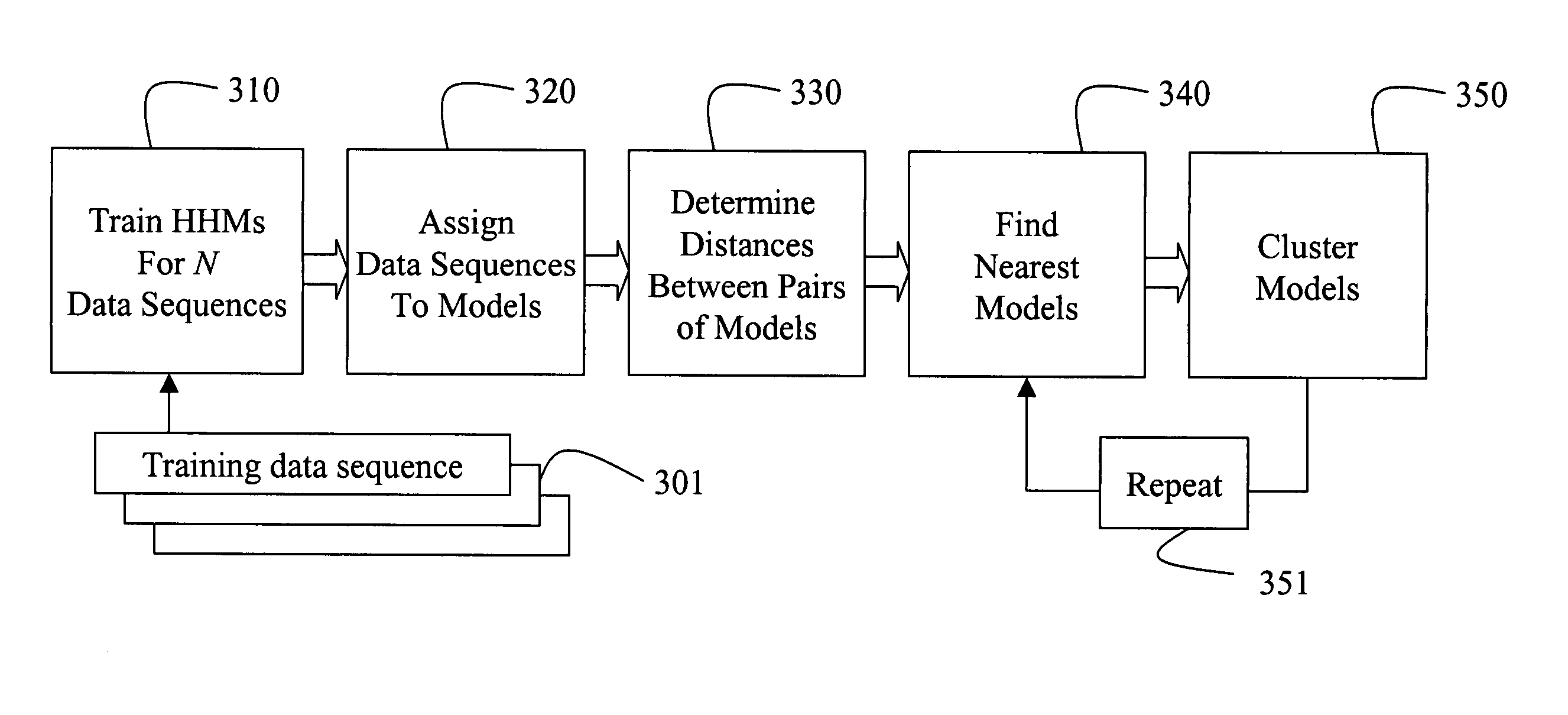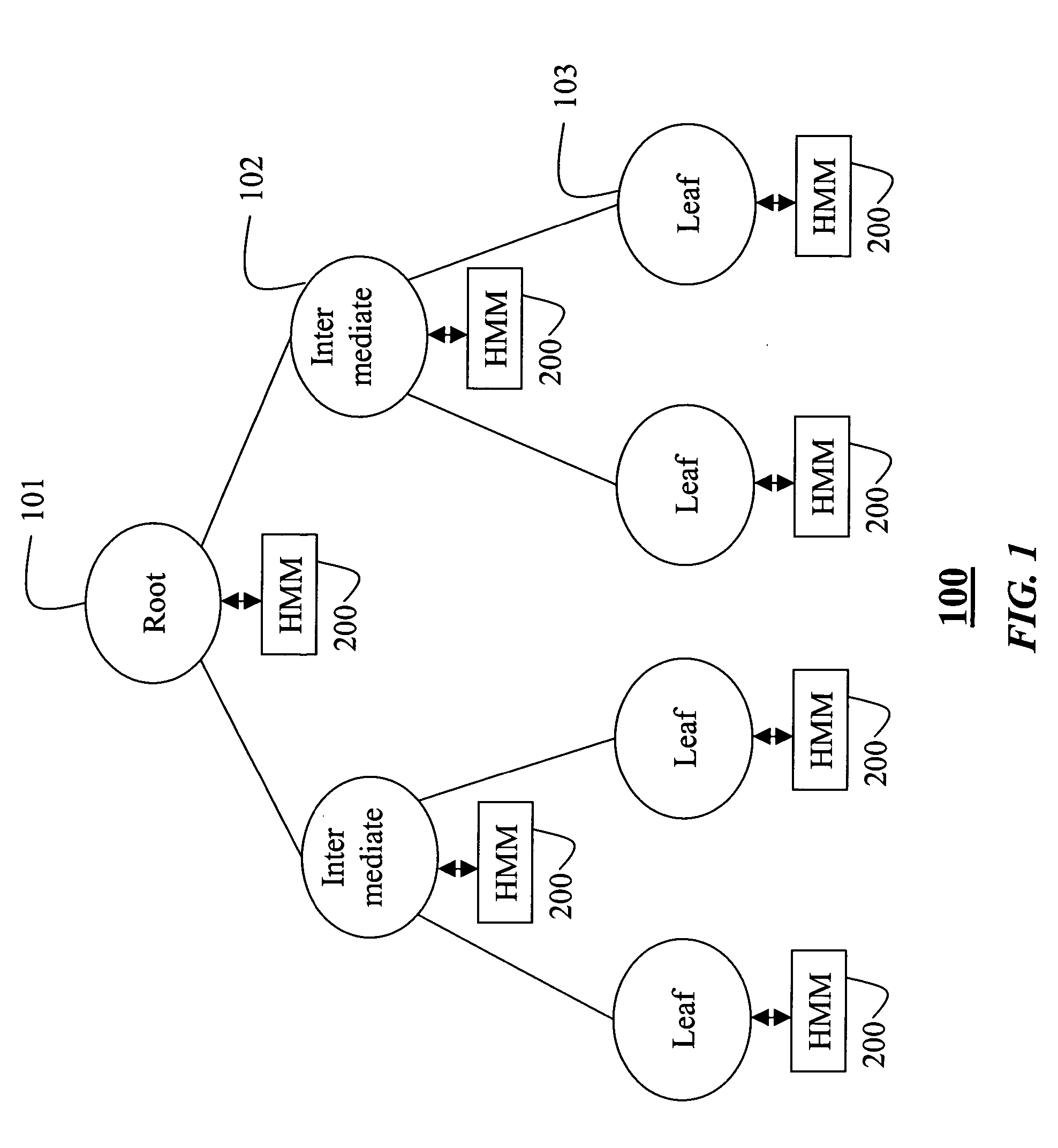Determining temporal patterns in sensed data sequences by hierarchical decomposition of hidden Markov models
a markov model and temporal pattern technology, applied in computing models, instruments, electric/magnetic computing, etc., can solve the problems of time-consuming and computationally complex prior art modeling methods, and achieve the effect of reducing the overall computational cost of pattern discovery
- Summary
- Abstract
- Description
- Claims
- Application Information
AI Technical Summary
Benefits of technology
Problems solved by technology
Method used
Image
Examples
Embodiment Construction
[0016] As shown in FIG. 1, a basic structure for determining temporal patterns in data sequences to our invention is a hierarchical tree 100. The tree 100 includes a root node 101, intermediate nodes 102, and leaf nodes 103. The example tree 100 includes three levels of nodes. It should be understood that there can be any number of levels.
[0017] Each node is associated with a composite hidden Markov model (HMM) 200. The composite HMMs are obtained by clustering HMMs as described below.
[0018] As shown in FIG. 2, each composite HMM has one independent path 201 associated with each child node at a next lower level than the parent node in the tree 100. Herein, the example nodes are for 2-path composite HHM nodes. Therefore, the tree 100 is a binary tree. It should be understood that a parent node can have any practical number of child nodes. A start state 211 and an end state 212 of the composite HHM 200 are non-emitting.
[0019] To begin with, temporal data sequences are sensed or acq...
PUM
 Login to View More
Login to View More Abstract
Description
Claims
Application Information
 Login to View More
Login to View More - R&D
- Intellectual Property
- Life Sciences
- Materials
- Tech Scout
- Unparalleled Data Quality
- Higher Quality Content
- 60% Fewer Hallucinations
Browse by: Latest US Patents, China's latest patents, Technical Efficacy Thesaurus, Application Domain, Technology Topic, Popular Technical Reports.
© 2025 PatSnap. All rights reserved.Legal|Privacy policy|Modern Slavery Act Transparency Statement|Sitemap|About US| Contact US: help@patsnap.com



